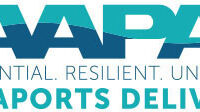LNG Fueling Economic Growth, Environmental Sustainability

As liquified natural gas (LNG) continues to gain traction as a commercial marine fuel, the maritime industry and global community will reap economic and environmental benefits. Fueling more ships with safe, clean-burning LNG improves air quality. The transition to LNG fuel will create a wide range of jobs, from ship building to bunkering.
Any major change takes time, but a growing number of LNG-fueled ships are being built and launched every year. According to Class Society DNV, a global maritime advisory organization, at the end of 2021 there were 251 LNG-fueled ships in operation and approximately 450 on order at shipyards worldwide.
The cruise industry forecasts 26 LNGpowered cruise ships by 2027. Carnival, Royal Caribbean and Disney cruise lines all have plans for greener, more efficient ships. According to the Cruise Lines International Association (CLIA), LNG helps reduce a cruise ship’s carbon emissions by approximately 30%.
LNG has been adopted as a marine fuel for a wide range of vessels, including container ships, crude tankers, chemical tankers, passenger ferries, car carriers, tugs, bulk carriers, fishing vessels and dredgers. With a growing number of LNG-fueled vessels, demand for LNG as bunker fuel is rising.
More U.S. Jobs
As more LNG-fueled ships enter service this year and the next, more will be calling on U.S. ports. Since the middle of 2021, the United States has become very attractive for overseas ship owners looking for affordable LNG bunkering. U.S. domestic LNG prices have remained relatively stable compared to sky-rocketing prices in Asia and Europe, allowing some U.S.-based LNG suppliers to offer very competitive prices.
Increased demand for LNG will translate into more U.S. jobs in LNG production and logistics. More LNG bunker barges will be needed, filling the order books of U.S. shipyards and securing quality jobs for shipyard workers. More U.S. mariners will be needed to crew these LNG bunker vessels. The U.S. maritime community as a whole will benefit from fleet growth and the general increase in activities.
Galveston LNG Bunkering Coming in 2022
To meet growing fuel demands, LNG producer and distributor Stabilis Solutions, Inc. of Houston will provide turnkey LNG bunkering services for vessels calling on the Port of Galveston. Having received full U.S. Coast Guard approval, LNG bunkering services will be available at the Port of Galveston beginning in June.
Stabilis will provide mobile shore-to-ship fueling with LNG produced at its plants in Texas and Louisiana. The facility gives the port a quickly deployable and scalable LNG bunkering solution to meet customer demands for more environmentally sustainable marine fuels.
In addition, other fuel bunkering companies have approached the Galveston Wharves. As one example, Pilot LNG has expressed interest in leasing a port-owned tract on the northeast side of Pelican Island for a bunker terminal to serve ships in the busy Galveston, Houston and Texas City region.
What’s Driving Change?
While the air quality benefits of LNG have been known for years, greenhouse gas (GHG) reduction targets set by the International Maritime Organization (IMO) are driving change in the maritime industry. The initial IMO target is for the maritime industry to reduce GHG emissions 40% by 2030.
LNG reduces the environmental footprint of international shipping and has a positive effect on air quality in and around U.S. ports. Looking further afield, U.S. research and development institutes and laboratories are leading the development of revolutionary carbon capture and storage technologies that will allow LNG-fueled ships to operate with net-zero carbon emissions.
Since it can take several years for these promising technologies to mature into commercially available systems, LNG as marine fuel is a great solution to bring down maritime emissions immediately. Some ship owners have already adopted LNG as their interim fuel until net-zero emissions solutions become available.
According to CLIA, LNG fuel is one of the best options available for cruise ships to reduce the industry’s carbon footprint. By using LNG fuel, sulfur emissions are reduced by nearly 99% and nitrogen oxide emissions are reduced by 85%. This is a huge step toward a greener future for the cruise industry.
LNG also supports the Port of Galveston’s environmental goals as a Green Marinecertified port. By joining the voluntary environmental program for the North American maritime industry, the port has made a long-term commitment to continuous improvement in environmental performance.
LNG bunkering would help reduce the maritime industry’s environmental footprint in our region. The Port of Galveston is proud to be an early adopter to offer this clean fuel.




